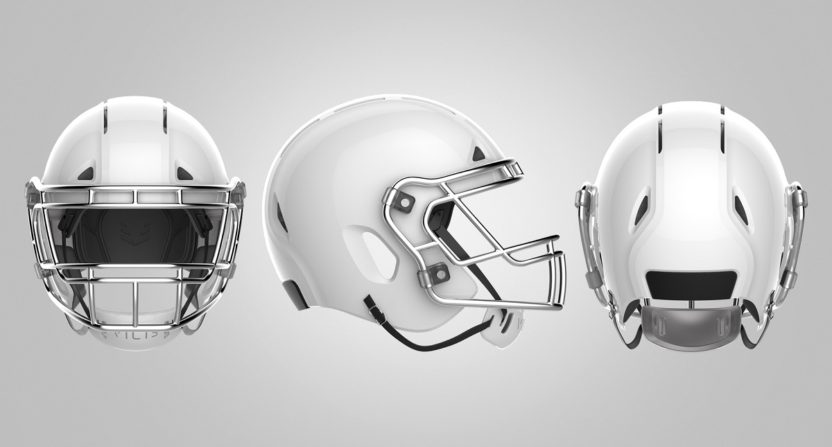At this point, it’s difficult to watch the NFL without thinking of the massive link between the sport and concussions, and the further link between concussions and CTE, among other long-term health problems. (And as we saw with Zach Miller, brain health isn’t the only potentially life-altering medical problem that can arise on the football field.)
Players obviously have the most at stake, as its their brains and their bodies at risk every play. You might think, given the circumstances, that if a new piece of equipment was developed that could potentially reduce contact trauma, players would be all over it. And yet, there is a helmet that tested better, and it’s used sparingly across the NFL.
The Sun-Times ran a feature from Patrick Finley on two members of the Chicago Bears who now wear the VICIS Zero1 helmet, and it’s an interesting look at what goes into a player’s equipment choices:
Mitch Unrein suffered the second concussion of his career the week of the Bears’ first preseason game when he was hit in the side of his helmet during training camp.
When the defensive end began working out again, the symptoms lingered.
Concerned, his wife Corey Cogdell-Unrein, an Olympic shooter, went online to research helmet safety. She found the VICIS Zero1 received the highest safety rating of 33 helmets in a joint study by the NFL and NFLPA, and encouraged her husband to try it.
Around the same time, tight end Ben Braunecker got the same suggestion — from his computer. He was watching videos online when he noticed one of the suggested items was about the new helmet. The web site apparently knew the Harvard grad was a pro football player.
Both players ended up requesting the helmet, which the team procured, and they now wear it. It’s been a bit of an adjustment for both players, though to an objective, non-NFL playing observer, the differences they describe don’t seem to be that big of a deal relative to the potential upside:
“It’s actually fundamentally different than any other helmet I’ve worn,” said Braunecker, a practice squad player who seems due for a promotion after Zach Miller’s knee injury.
The helmet looks unlike anything else on the field — the flexible outer shell dents like the crumple zone of a car. Polymer columns located between the outer shell and a hard inner shell absorb the shock of a hit.
…
“It doesn’t look cool,” Unrein said. “A lot of guys are all about, ‘Look good, feel good, play good.’ But me, I’m like, ‘Shoot, I’m a country kid. I don’t need to be looking good. I just need to go out there and play.’”
As Braunecker showed off his helmet in the Bears’ locker room, fellow tight end Daniel Brown joked about the “spaceship on his head.” It weighs more than his old helmet, Braunecker said, but he got used to it by the end of his first training camp practice with it on.
Both Unrein and Braunecker are aware that no helmet is going to be a magic bullet in the battle against concussions or other head injuries. But it certainly couldn’t hurt. Still, professional athletes are sometimes at the tail-end of trends, simply by virture of having grown up playing in different equipment. Why not start supplying high schools with this technology now?
Here’s an AP story from September on the VICIS helmet, what makes it safer, and what’s keeping it out of high schools.rom happening, and you’re probably able to guess:
While the Edge Shield visor is only available with the Zero1 helmet, its retail price is between $90 and $125. The cost for the VICIS helmet, though, is $1,500.
That shouldn’t make an NFL player think twice, but it can limit its attractiveness to some colleges and, in particular, for youth sports.
But (helmet creator David) Marver says his company has begun taking reservations from parents and grandparents of high school players for smaller and lighter helmets that cost less next year.
New technology certainly comes at a cost, and football helmets aren’t cheap as it is. Still, it’s comforting that the technology appears to be on its way to at least reduce some of the more preventable results. But the sport as a whole is never going to eliminate injuries like these. Whether that means football lasts another few decades or longer remains to be seen.







